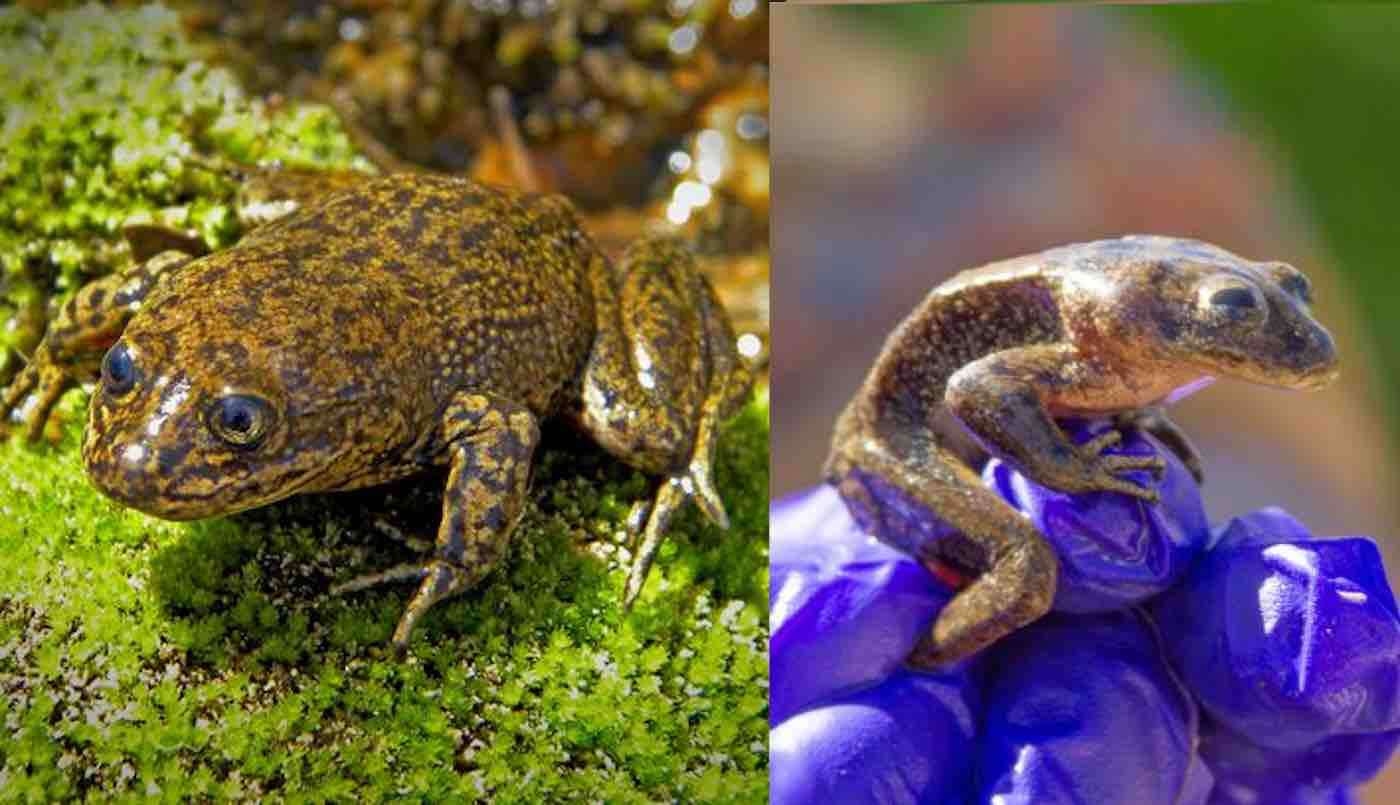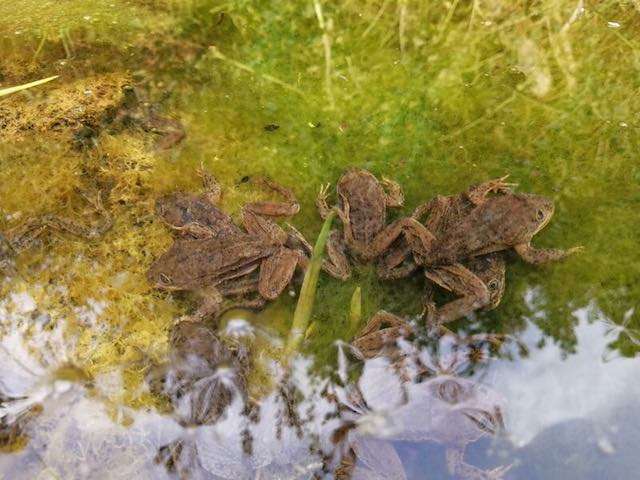Watch Thoughtful Duck Retrieve Boy's Sandal After it Had Fallen into a Muddy Ditch
This sweet bird from the Philippines took it upon itself to return a boy's lost sandal from the depths of a muddy trench last week.

A team of conservationists and government officials in Chile are being praised for their swift and unprecedented rescue mission of a critically endangered frog species just in the nick of time.
Last month, the researchers managed to save 14 of the Loa water frog, a species that can only be found in a single stream in Chile.
Specialists say that the rescued amphibians could be the last of the entire species—and the critters were rescued just before their habitat had completely dried up, leaving the frogs malnourished and barely hanging on.
Chilean officials stumbled upon the plight of the Loa water frog after they discovered that its habitat outside the city of Calama—which is located in the middle of the Atacama desert—had dried up as a result of mining, agriculture, real estate development, and water extraction for mining purposes.
In a region where water is a scarce resource, all of the frogs had been pushed into a tiny pool of muddy water. Thankfully, the team managed to collect what they believe to be the last 14 frogs and brought them to the National Zoo of Chile to start a conservation breeding program.
As the zoo's specialists try to nurse the critters back to health, they are reportedly talking to water frog experts from around the world in order to gather tips for calculating the best methods of breeding and care.

A number of international wildlife organizations—including Amphibian Ark, the IUCN SSC Amphibian Specialist Group, the Amphibian Survival Alliance and Global Wildlife Conservation—are now calling on the government of Chile to continue this great work by protecting and restoring the frogs' home in the wild.
"We request that consideration be given to the development of an emergency plan for the protection and recovery of Loa frog habitat," said Jon Paul Rodríguez, chair of the IUCN Species Survival Commission. "For this reason, we call for the establishment of a technical working group to assist the work in this matter."
There are at least 63 known species of water frogs, or Telmatobius species, found from Ecuador to Chile, including in Peru, Bolivia and Argentina. Many of these species, like the Loa water frog, are microendemic, which means they live in just one small place. Water frogs are semi-aquatic or entirely aquatic, making them very sensitive to any changes in their environment. Habitat destruction, pollution, disease and invasive trout are among the biggest threats they face.

"Without the zoo, we wouldn't have made it this far," said Claudio Soto Azat, co-chair of IUCN SSC Amphibian Specialist Group Chile. "The situation was so critical, the main habitat was so dry, that the rescue was the only option. If the zoo wouldn't have had the capacity to do it, the story right now would be very different."
Perhaps the most well-known individual water frog is Romeo: a Sehuencas water frog from Bolivia who was formerly known as the world's loneliest frog.
The Sehuencas water frog team at the Museo de Historia Natural Alcide d'Orbigny where Romeo lives has been among the experts helping to advise the National Zoo of Chile. Additionally, Romeo has written a letter to his Loa water frog brethren at the National Zoo in Chile encouraging them not to lose hope—and he even narrated a video about their plight. Global Wildlife Conservation is asking individuals around the world to spread the word about the Loa water frogs using the hashtags #SaveTheLoaFrog and #SalvemosLasRanitasDelLoa to show international support for the frogs.
(WATCH Romeo the frog's call to action below)
Romeo the Frog Urges Action to #SaveTheLoaFrog (English) from GlobalWildlife on Vimeo.
You Better Hop To It! Share The Good News With Your Friends On Social Media…
Be the first to comment